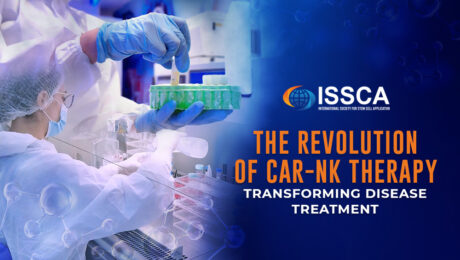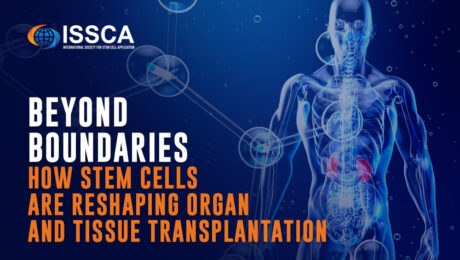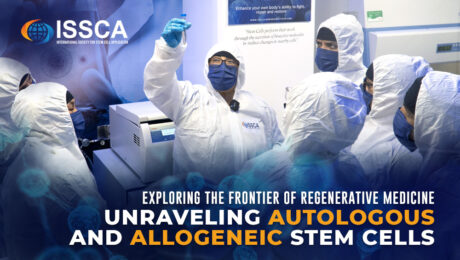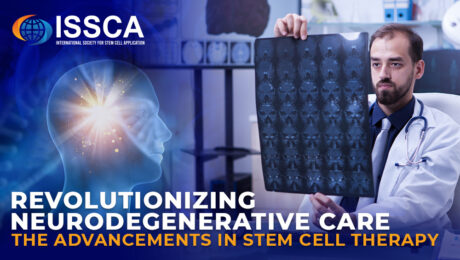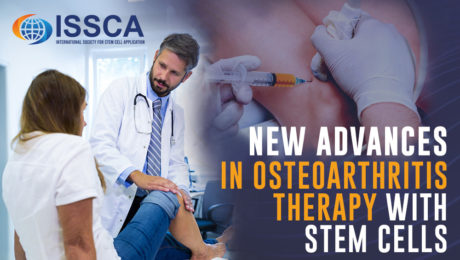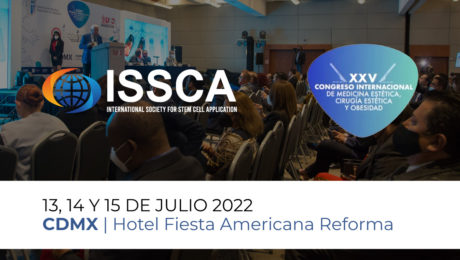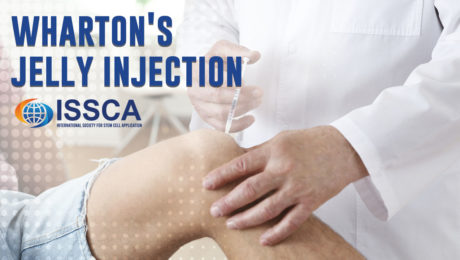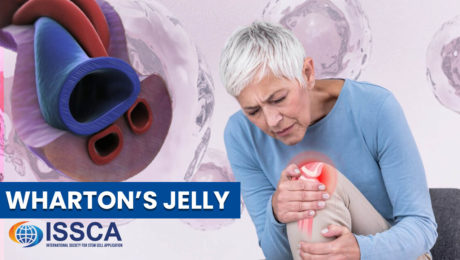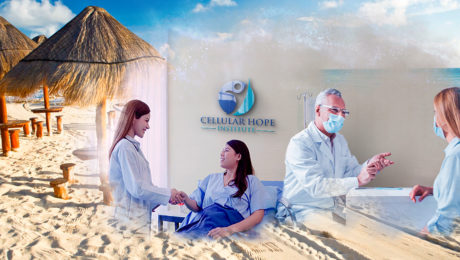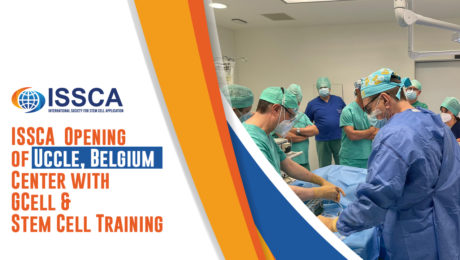The Revolution of CAR-NK Therapy: Transforming Disease Treatment
In the ever-evolving landscape of medical innovation, one breakthrough stands out—a transformative approach known as CAR-NK therapy. This groundbreaking development has the potential to revolutionize disease treatment, offering a safer and more effective solution for patients. Join us as we delve into the five pivotal aspects of CAR-NK therapy, reshaping the future of medical care.
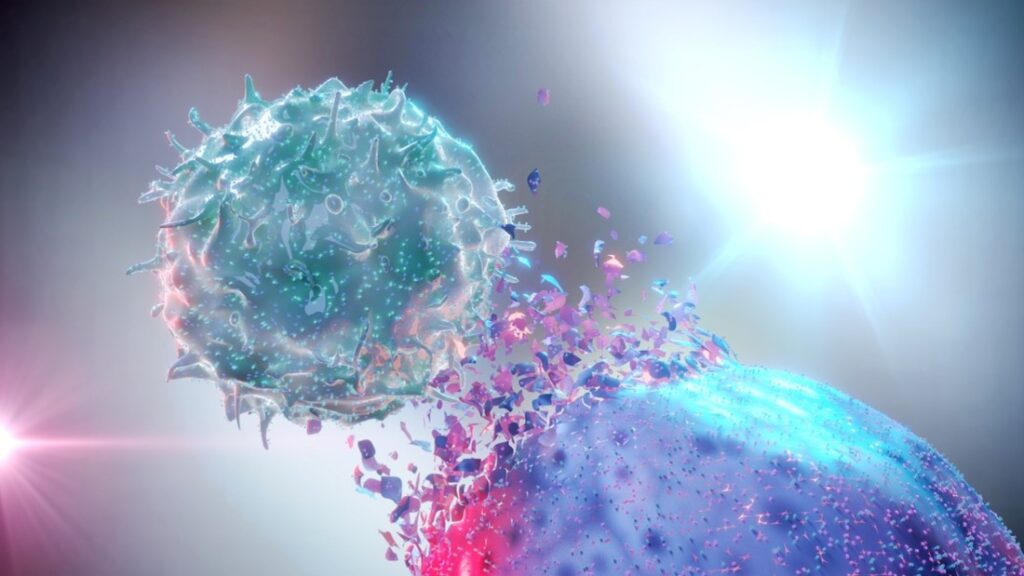
CAR-NK Therapy: Why is it a Game-Changer in Disease Treatment
1. Enhanced Safety and Versatility:
At its core, CAR-NK therapy represents a monumental shift in the treatment of various medical conditions. What sets it apart is its enhanced safety and versatility. Unlike its predecessor, CAR-T therapy, which uses the patient’s own T cells, CAR-NK cells can be derived from healthy donors or stem cells. This distinction significantly reduces the risk of complications, including graft-versus-host disease and cytokine release syndrome, which can sometimes accompany CAR-T therapy. Moreover, CAR-NK cells can be stored and used off-the-shelf, making them more readily available for patients in need.
2. Effective Against a Wide Range of Diseases:
The versatility of CAR-NK therapy extends to its effectiveness against a diverse spectrum of diseases. These remarkable cells possess the ability to target multiple antigens present on various cell types. From hematologic conditions to solid tumors, CAR-NK therapy demonstrates remarkable efficacy. Furthermore, it has the potential to counteract the mechanisms employed by cells to evade the immune system, such as immunosuppression and antigen loss.
3. Cost-Efficiency and Speedy Production:
Another compelling aspect of CAR-NK therapy is its cost-efficiency and rapid production. In comparison to the complex and personalized approach required for CAR-T therapy, CAR-NK cells can be manufactured on a larger scale. This streamlined production process significantly lowers costs, making this innovative therapy more accessible to a wider range of patients. The affordability of CAR-NK therapy brings us one step closer to a future where cutting-edge treatments are within reach for all.
4. A Thriving Field with Promising Potential:
While CAR-NK therapy is still in its early stages of clinical development, the initial results are promising and encouraging. Researchers and medical professionals worldwide are working tirelessly to unlock its full potential. Early trials have demonstrated its safety and efficacy, raising hopes for further breakthroughs in disease treatment.
CAR-NK therapy represents a monumental leap forward in disease treatment. At ISSCA.com, we are dedicated to advancing knowledge in the realm of regenerative medicine. We invite you to explore the transformative possibilities of CAR-NK therapy and its potential to reshape the future of medical care. As we journey together, you’ll discover that the horizon of possibilities in healthcare is continually expanding.
Explore our courses and international congresses at ISSCA.com to deepen your knowledge in regenerative medicine.
- Published in Blog
Beyond Boundaries: How Stem Cells Are Reshaping Organ and Tissue Transplantation
Stem Cells: Pioneers of Regeneration
Within the sacred corridors of medical advancement, a profound transformation is silently taking place, poised to reshape the very foundations of organ and tissue transplantation. Envision a realm where donor shortages and the specter of immune system rejection fade into history, and where medical horizons stretch to unprecedented frontiers. In this immersive voyage, we embark on a journey to unmask the enigmatic power of stem cells in the realm of transplantation, a journey that invites you to witness the precipice of medical progress.
The Choreography of Compatibility
Navigating the intricate choreography of compatibility between donor and recipient is one of the most formidable tasks in transplantation. The ever-watchful immune system often triggers rejection, undermining even the most meticulous transplantation endeavors. Yet, stem cells are orchestrating a symphony of change. Through ingenious techniques, researchers are tapping into stem cells’ immunomodulatory prowess, crafting an environment of harmonious coexistence between donor and recipient. This revolutionary approach not only mitigates the risks of rejection but also broadens the spectrum of viable donors.
A Symphony of Science
The harmony between stem cells and transplantation is not an untested hypothesis; it’s a symphony composed through rigorous scientific exploration. An extensive repertoire of peer-reviewed studies, gracing the pages of prestigious journals such as The Lancet and Nature Communications, underscores the potential of stem cells to elevate transplant success rates. These studies illuminate advancements spanning from refining graft survival to hastening the regeneration of vital tissues, a resounding affirmation of the transformative capabilities underpinning stem cell-driven transplantation.
Embark on a Journey of Revelation
Eager to unravel the mysteries encapsulating stem cell-powered transplantation? We extend a heartfelt invitation to embark on an illuminating expedition through our comprehensive training courses in regenerative medicine. Enrich your understanding under the tutelage of eminent experts, delving into the most recent breakthroughs, evidence-based methodologies, and clinical applications. Step into a realm where the boundaries of medical possibilities are redrawn, where your perception of transplantation is enriched, and where you assume the mantle of a pioneer in the regenerative revolution.
The fusion of stem cells and organ transplantation isn’t confined to the realm of scientific speculation; it represents a monumental stride towards re-scripting the destinies of countless lives. As we venture into an epoch where medical accomplishments redefine our limits, the expedition becomes all the more exhilarating.
Join us at issca.us, where the convergence of science and hope awaits. Immerse yourself in the vanguard of regenerative medicine, where the transformative prowess of stem cells beckons. Together, we shall forge ahead, empowered by the symphony of possibilities, shaping a brighter, healthier future for generations to come.
- Published in Blog
Exploring the Frontier of Regenerative Medicine: Unraveling Autologous and Allogeneic Stem Cells
WEDNESDAY, 06 SEPTEMBER 2023 / PUBLISHED IN BLOG
Exploring the Frontier of Regenerative Medicine: Unraveling Autologous and Allogeneic Stem Cells
In the realm of modern medicine, a groundbreaking field has emerged, promising to reshape the way we approach healing and rejuvenation – regenerative medicine. At the heart of this revolution lie stem cells, the unsung heroes of tissue repair and regeneration. In this comprehensive exploration, we delve into the intricate differences between two crucial types of stem cells: autologous and allogeneic. Prepare to be captivated by the scientific intricacies that underpin these extraordinary cells and discover how they’re poised to redefine medical possibilities.
Autologous Stem Cells: A Personalized Touch
Imagine harnessing the power of your body’s own natural healing abilities. Autologous stem cells make this vision a reality. Derived from your own tissues – be it bone marrow, adipose tissue, or other sources – these cells hold the promise of personalized healing. The process involves harvesting the stem cells, processing them to enhance their therapeutic potential, and then reintroducing them into the body. This “self-healing” approach minimizes the risk of rejection and side effects, making autologous stem cell therapies an attractive option for many.
Scientific Precision
Autologous stem cell therapies are supported by a wealth of scientific evidence. Studies published in esteemed journals like the Journal of Translational Medicine and Stem Cell Research & Therapy have highlighted their potential in diverse applications, from musculoskeletal disorders to cardiovascular conditions. This approach holds immense promise for targeted healing while minimizing the risk of immune system complications.
Allogeneic Stem Cells: A Shared Resource for Healing
In the quest for regenerative solutions, allogeneic stem cells emerge as a game-changer. These cells are sourced from carefully screened donors and subsequently administered to patients. By tapping into a shared pool of stem cells, medical practitioners can provide a standardized treatment option that’s readily available. Allogeneic stem cells hold the potential to address a broad spectrum of conditions, offering a versatile and accessible avenue for regenerative therapies.
Scientific Validation
The science behind allogeneic stem cell therapies is compelling. Rigorous research published in renowned journals such as the Journal of Stem Cells and Development and Stem Cells Translational Medicine has underscored their efficacy in various medical scenarios. This approach not only broadens the scope of treatment but also expedites the therapeutic process, presenting an exciting frontier in regenerative medicine.
Embrace the Future with Knowledge
Intrigued by the dynamic interplay of autologous and allogeneic stem cells in regenerative medicine? We invite you to embark on a transformative journey of discovery through our comprehensive training courses. Our platform offers unparalleled insights into the latest advancements, evidence-based practices, and clinical applications of these remarkable stem cells. Guided by esteemed experts in the field, our courses provide a unique opportunity to stay at the forefront of regenerative medicine’s evolution.
As the horizon of medicine expands to encompass regenerative possibilities, autologous and allogeneic stem cells take center stage. These cellular protagonists hold the key to unlocking personalized healing and broad-spectrum rejuvenation, ushering in an era of medical advancement like never before. Join us in our mission to unravel the mysteries of regenerative medicine and explore the profound potential of stem cells. Visit issca.us today, and together, let’s embark on a journey that could reshape the landscape of healthcare for generations to come.
- Published in Blog
Revolutionizing Neurodegenerative Care: The Advancements in Stem Cell Therapy
MONDAY, 13 MARCH 2023 / PUBLISHED IN BLOG
Neurodegenerative diseases, including Alzheimer’s disease, Parkinson’s disease, Huntington’s disease, and amyotrophic lateral sclerosis, are a group of incurable neurological disorders characterized by the chronic progressive loss of different neuronal subtypes. The conditions are debilitating and affect millions of people worldwide. Despite its increasing prevalence among the ever-increasing aging population, little progress has been made in the coincident immense efforts towards development of therapeutic agents. However, recent advancements in stem cell therapy, including stem cell-derived exosomes, neurotrophic factors (NTFs), and their combination, show promise as potential therapeutic agents in neurodegenerative diseases.
The Promise of Stem Cell Therapy
In recent years, stem cells have emerged as one of the most active research therapeutic tools for many diseases. Stem cells are undifferentiated cells that have the ability to develop into pluripotent stem cells and adult stem cells. All stem cells have the potential for continuous self-renewal, high proliferation, and multidirectional differentiation into various cell types to replace degenerated or dead cells. In the context of neurodegenerative diseases, stem cells can be used to replace lost or damaged neurons, provide neuroprotection, and promote neural repair. These properties make stem cells an attractive option for treating neurodegenerative diseases, as they have the potential to slow or even reverse the progression of these conditions.
Advantages of Stem Cell Therapy
One of the key benefits of stem cell therapy for neurodegenerative diseases is that it offers a non-invasive, minimally-invasive, and non-toxic alternative to traditional treatments. Unlike drugs and surgery, stem cell therapy does not produce adverse side effects and can be administered in a safe and controlled manner. In clinical trials, stem cell therapy has been shown to be effective in reducing symptoms and improving quality of life for patients with neurodegenerative diseases.
Alzheimer’s Disease (AD)
Alzheimer’s disease (AD) is a progressive neurodegenerative disease and the most common form of dementia, affecting approximately 55 million people worldwide. Cognitive impairment is a hallmark of AD. Currently, drug therapies can only delay symptoms, but not relieve disease pathology or progression. Researchers have demonstrated that neurons derived from stem cells can integrate with existing neural networks and repair damaged neurons within the host brain, improving learning and memory deficits. NTFs can improve AD symptoms and provide neuroprotective effects.
Parkinson’s Disease (PD)
The second most common neurodegenerative disorder is Parkinson’s disease (PD). The motor symptoms of PD mainly include rest tremor, rigidity, bradykinesia, and postural instability, while common nonmotor symptoms include neuropsychiatric and sleep disorders as well as sensory and autonomic dysfunction. At present, there is no cure for PD or disease-modifying therapy. It is common for symptom-relief medications to only provide partial relief and elicit side effects such as motor complications, gastrointestinal problems, and neurological issues. In spite of the fact that these treatments do not address the underlying pathology, alternative therapies, especially those based on stem cells and NTFs, are still being pursued intensively.
Huntington’s Disease (HD)
Huntington’s disease (HD) is characterized by motor, cognitive, and psychiatric dysfunctions. The study of multiple possible neurodegenerative mechanisms of HD is currently underway, and this knowledge is expected to contribute to the development of new HD treatments. The abilities of stem cells to rescue or replace the damaged and dying neurons, and to prevent further cell damage and death, make stem cell-based therapies promising for treatment of this neurodegenerative disease.
Amyotrophic Lateral Sclerosis (ALS)
As a neurodegenerative disorder, amyotrophic lateral sclerosis (ALS) involves progressive degeneration of both upper and lower motor
neurons, resulting in palsy and death within 3-5 years of onset. Currently, only two disease-modifying medicines are available, each showing benefit to a limited number of patients. Stem cell-based therapy holds great promise for treating ALS by providing both cell replacement and NTF delivery to target the multiple pathologies. Stem cells available for ALS treatment include NSCs, MSCs, embryonic stem cells, induced pluripotent stem cells, and olfactory ensheathing stem cells.
The Future of Stem Cell Therapy in Neurodegenerative Diseases
While stem cell therapy is still in the early stages of development, it holds enormous promise as a future treatment for neurodegenerative diseases. A number of studies have demonstrated that stem cells and NTFs offer considerable therapeutic potential, especially when they are used together. In addition to replenishing target neurons, stem cells combined with NTFs can produce neurotrophins to improve the microenvironment that promotes nerve repair and regeneration. As research continues, we can expect to see even more exciting advancements in this field, bringing hope to those affected by these debilitating conditions.
Conclusion
Stem cell therapy represents a revolutionary approach to treating neurodegenerative diseases, offering a non-toxic, minimally-invasive alternative to traditional treatments. With ongoing research and development, the potential to improve patient outcomes and quality of life is immense. It’s important to stay informed about the latest developments in stem cell therapy. You can learn more about regenerative medicine and stem cells by enrolling in our international certification program at www.issca.us.
- Published in Blog
New advances in osteoarthritis therapy with stem cells
FRIDAY, 18 NOVEMBER 2022 / PUBLISHED IN BLOG
Osteoarthritis is a rheumatic pathology that damages the articular cartilage. By joining two bones through the joint capsule, the joints are able to move, providing us with functional autonomy. An inner fluid called synovial fluid is usually found within joints, which is produced by the synovial membrane. Articular cartilage covers the ends of the bones that form the joint. As a result of damage to this articular cartilage, pain, stiffness, and functional impairment occur. Osteoarthritis is the most common joint disorder, usually beginning between the ages of 40 and 50, affecting to some degree almost everyone over the age of 80. Typically, osteoarthritis affects the spine, shoulders, fingers, hips, knees, and toe joints.
Potential of Stem Cell Therapies
Stem cell therapies have the potential to treat a broad spectrum of diseases, including osteoarthritis, rhizarthrosis, diabetes, neurodegenerative diseases, spinal cord injuries, and heart disease. By utilizing stem cells, regenerative medicine is capable of repairing tissues in affected areas. The main difference between lipogem therapy and other treatments for osteoarthritis is that lipogem therapy regenerates cartilage, avoids surgery and its sequelae, and improves the quality of life for patients.
Advances in Sports Medicine and Traumatology
The potential for medical treatments with stem cells and their by-products is currently very high. In the field of sports medicine and traumatology, one of the most outstanding advances has been made for the first time in decades recently: Spanish scientists have achieved a degree of tendon regeneration in 100% of injured patients, resulting in a decrease in pain and a return to sport within two months, and just six months after the trial was completed.
A research performed by the Institute of Regenerative Tissue Therapy (ITRT), published by the prestigious American Journal of Sports Medicine, demonstrates how this therapy regenerates chronic lesions in the patellar tendon and opens up a new therapeutic option for this tissue, which was considered impossible to regenerate.
Adipose Tissue-Derived MSCs
In most patients, fat tissue can be harvested minimally invasively (under local or general anesthesia), providing a highly viable MSC population regardless of donor age. Similar to MSCs derived from other tissues, adipose tissue-derived MSCs have regenerative potential. As osteoarthritis is a very common joint disease, and knee osteoarthritis is the most common form, it is necessary to review scientific literature on osteoarthritis treatments with stem cells, like lipogems.
Lipogems Therapy
Lipogems therapy is a novel procedure that enhances the body’s natural ability to heal itself through the innovative power of science and biotechnology. The Lipogems method involves injecting mesenchymal stem cells into the joints. Adipose-derived mesenchymal stem cells have enormous regenerative potential. They also have a regenerative capacity independent of their age. Even older individuals can benefit from this procedure.
Injection of mesenchymal stem cells into the knee, particularly in the early stages of osteoarthritis, can stop the process of inflammation and degeneration, especially in the less advanced stages of the disease. In addition to preventing progressive physical deterioration of the articular cartilage, this treatment contributes significantly to a patient’s well-being and prevents the installation of knee prostheses.
Patellar Tendinopathy: Physiotherapeutic Treatment and Stem Cell Therapy
Injuries to the patellar tendon that connects the kneecap to the tibia are known as patellar tendinopathy or patellar tendinitis. The patellar tendon works with the muscles in the front of the thigh to extend the knee so you can kick, run, and jump. Athletes who perform frequent jumping in their sports, such as basketball and volleyball, are most likely to suffer from patellar tendonitis. However, people who don’t engage in jumping sports may develop patellar tendonitis. Patients with patellar tendinitis usually begin treatment with physical therapy to stretch and strengthen their knee muscles.
Strength Training and Stem Cell Therapy for Tendinopathies
Strength training with eccentric resistance is one of the most common treatments for tendinopathies. Alternatively, it has been demonstrated that bone marrow-derived mesenchymal stem cells (MSCs) can regenerate injured patellar tendons. Within six months of treatment, it has been observed that the structure of this tissue – which is always difficult to treat – is restored, reaching a regeneration of 40% in all injured persons, with a gradual improvement that eventually becomes complete.
Combination Therapies for Patellar Tendinopathy
It has been found that traditional management methods, including isometric or eccentric exercises, shock wave therapy, and even surgery, are not effective. As part of a rehabilitation program in chronic patellar tendinopathy, autologous expanded bone marrow mesenchymal stem cells (BM-MSC) or leukocyte-poor platelet-rich plasma (Lp-PRP) may be effective in reducing pain and improving activity levels. Traditional management, which includes isometric or eccentric exercises, shock wave therapy, and even surgery, has limited success. A combination of autologous expanded bone marrow mesenchymal stem cells (BM-MSCs) and leukocyte-poor platelet-rich plasma (Lp-PRP) and rehabilitation may reduce pain and improve activity levels in active participants with chronic patellar tendinopathy.
To learn more about stem cells, cellular therapies, and keep up to date with all the information about regenerative medicine and its advances, sign up for our international certification in regenerative medicine at www.issca.us.
- Published in Blog
ISSCA Members to Present in the XXV Congreso Internacional de Medicina, Cirugia Estética y Obesidad
The XXV Congreso Internacional de Medicina, Cirugia Estética y Obesidad will take place in CDMX, México on July 13,14 and 15, 2022. The International Society for Stem Cell Application (ISSCA) will be actively taking part in the congress. The ISSCA is a multidisciplinary community of physicians and scientists with a mission to advance the science, technology, and practice of regenerative medicine to treat diseases and lessen human suffering through science, technology, and regenerative medicine. Several ISSCA members will be presenting or giving demonstrations on the latest protocols and technologies in regenerative medicine.
- Benito Novas, the managing director of the ISSCA from the USA, will give a talk about Digital Marketing in Cash-Based Practices. Benito Novas is a global entrepreneur, manager, and keynote speaker, who specializes in marketing focused on biotechnology, life sciences, and healthcare development. He has served as the director of the ISSCA since 2016. His published books in Aesthetic Practice and Digital Marketing can be found here. In his presentation this July, he will share his visionary approach to healthcare management and regenerative medicine. Congress attendees will have the opportunity to learn why doctors must use digital marketing strategies to grow a successful practice. Benito Novas will provide tips to attendees on how to capitalize on social media trends to grow practice influence.
- Dr. Maritza Novas, the ISSCA director of education from the USA, will talk about Allogeneic Therapies and Stromal Cell Exosomes. The use of allogeneic therapy is one of the most attractive alternatives to autologous products and is of utmost interest to researchers in recent years. Exosomes serve as mediators for cell-to-cell communication and can be used as cell-free therapeutics for their special characteristics. Dr. Maritza Novas has been in aesthetic and anti-aging medicine since 2001. She is globally recognized for her work in regenerative medicine and dedicated service in education.
- Dr. Silvina Pastrana, the Argentina chapter director of the ISSCA from Argentina, will present on Fundamentals of Cellular Therapies and Mesenchymal Stem Cells (MSC). Dr. Pastrana heads a staff of medical specialists in orthopedics, rheumatology, medical clinic, and cosmetic surgery, performing procedures that incorporate stem cell therapies. She has been serving as a staff surgeon for the Hospital Dr. Prof. Luis Güemes for 21 years.
Besides the above presentations, look forward to sessions in the practical portion of the congress, where the following ISSCA members will show the latest protocols and technologies in regenerative medicine:
- Dr. Julio Ferreira (Argentina), Cosmetic Surgery / Aesthetic Medicine
- Dr. Andrea Lapeire (Argentina), Aesthetic Medicine
- Dr. Maritza Novas (USA), ISSCA Director of Education in the USA
- Dr. Silvina Pastrana (Argentina), Chapter Director of ISSCA in Argentina
The ISSCA members are the leaders in setting standards and promoting excellence in the field of regenerative medicine, related education, certification, research, and publications. The Global Stem Cells Groups (GSCG) is a group of companies, including the ISSCA and other members, dedicated to facilitating stem cell research and medicine. Making the benefits of stem cell medicine a reality for both doctors and patients worldwide is the goal of the GSCG. To learn more, visit our sites at the ISSCA and the GSCG.
- Published in News
Wharton’s Jelly injection
MONDAY, 20 SEPTEMBER 2021 / PUBLISHED IN BLOG
What is Wharton’s Jelly?
Wharton’s Jelly is the gelatinous connective tissue found in the umbilical cord. This once discarded substance, previously thought of as afterbirth waste, is rich in healing substances and abundant in mesenchymal stem cells (MSCs).
Benefits of Mesenchymal Stem Cells from Wharton’s Jelly
The mesenchymal stem cells in Wharton’s Jelly are special because they are not readily recognized by the body’s immune system. They are considered “primitive cells,” meaning they have properties similar to embryonic cells. This reduces the risk of an immune reaction when these cells are injected into a patient.
Minimally processed Wharton’s Jelly preserves the growth factors and proteins needed for effective healing.
Who Can Benefit from Wharton’s Jelly Treatment?
Wharton’s Jelly is used in regenerative medicine, which employs naturally occurring cells and substances to promote tissue regeneration and healthy cell growth. This natural substance contains collagen, anti-inflammatory properties, growth proteins, and hyaluronic acid.
Treatment with Wharton’s Jelly can help with various ailments, including:
- Degenerative diseases
- Osteoarthritis
- Ligament and muscle damage
- Joint pain and inflammation
- Chronic pain
- Wound healing
There are no age restrictions on who can receive this treatment, and often a patient will only need treatment once.
How Does Wharton’s Jelly Treatment Work?
A specialized, minimally processed product derived from Wharton’s Jelly is injected into the injured site. While numbing is not always needed, lidocaine may be used for particularly sensitive areas. This process involves a relatively painless pinch of a needle. Once injected, the mesenchymal stem cells begin to transform into the cells needed to regenerate damaged tissue, reducing inflammation and pain, and restoring functionality.
Are There Any Side Effects to the Treatment?
No long-term risks or side effects have been reported. It is important to discuss proper protocols with your doctor before treatment.
Reasons to Undergo Cellular Therapy in Cancun, Mexico with Us
One of the main advantages of receiving cellular therapy treatment in Mexico is the ability to cultivate and reproduce, in a laboratory environment, the cells extracted from patients. This means a patient can receive a much larger concentration of cells, leading to improved results.
Additionally, Mexico is a great option for treatments that require a more invasive approach—a larger operating team, more medical products, and PPE. As one of the Western Hemisphere’s largest medical tourism capitals, treatments in Mexico are performed in hospitals that comply with FDA regulations and are offered at a more affordable price point.
While these treatments require a large investment from the patient, the cost of a multiple-day cellular therapy treatment in Mexico is far more affordable than the same treatment in the United States and Canada, especially without the ability to use culture-expanded cells.
What is the Recovery Period?
The actual injection does not require a recovery period, and most patients can return to their normal daily activities immediately. In cases of injury to ligaments or joints, rest may be required. Please follow your doctor’s advice for the best results from treatment.
Overall, Wharton’s Jelly injection treatment is minimally invasive and can help with a variety of ailments. With its limited side effects and regenerative properties, it is safe for patients of any age.
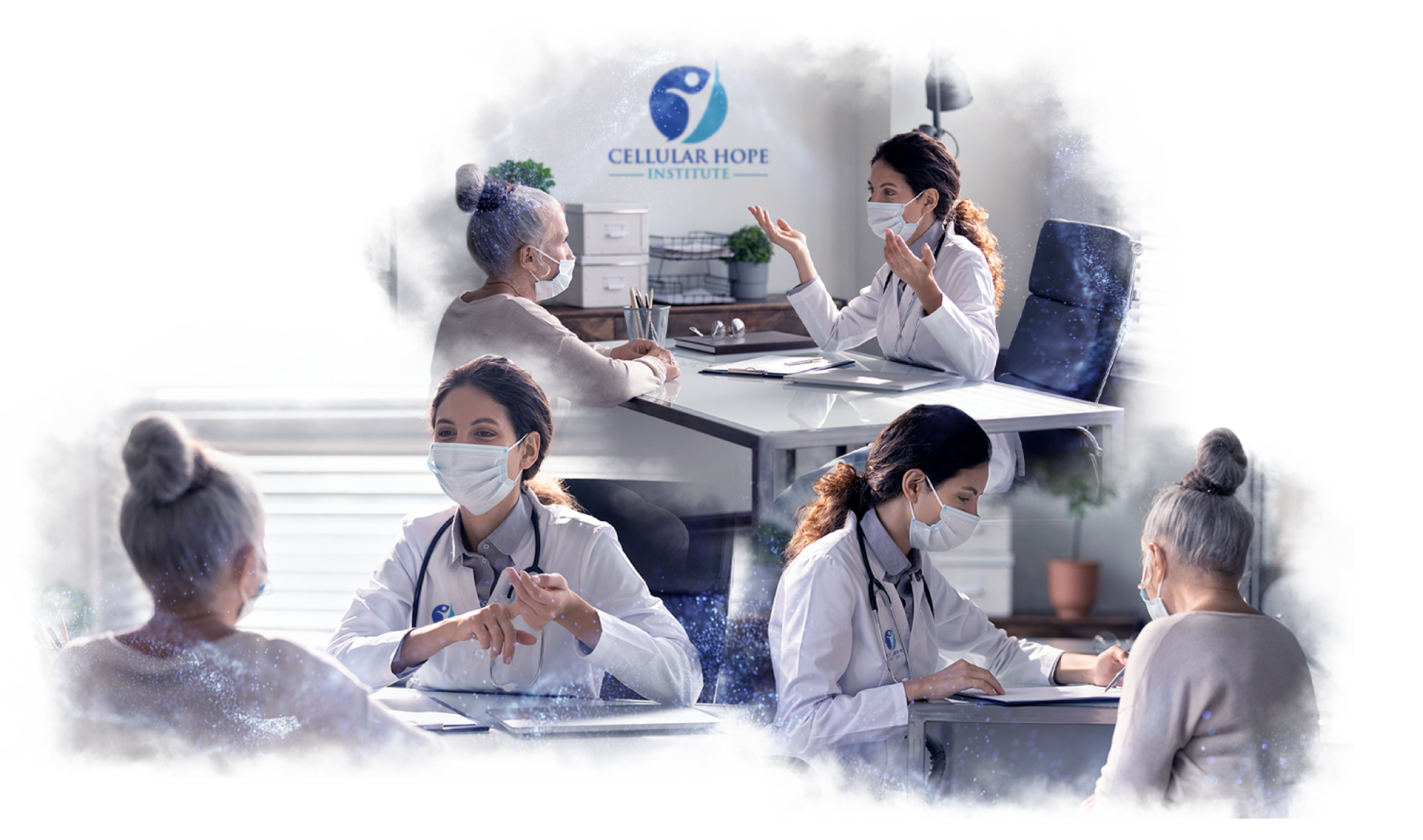
Contact Us
Talk with us to see if Wharton’s Jelly injection therapy is the right fit for you: Click here
About Cellular Hope Institute
At Cellular Hope Institute, we evaluate, diagnose, and treat patients around the world on a daily basis with the latest regenerative medicine modalities available today.
- Published in Blog
Wharton’s Jelly – how does it work?
THURSDAY, 16 SEPTEMBER 2021 / PUBLISHED IN BLOG
What is Wharton’s Jelly?
Wharton’s Jelly is the substance that helps lubricate and support the umbilical cord. What makes Wharton’s Jelly so special is it contains high levels of mesenchymal stem cells. These special stem cells adapt to fit the cells needed to help regenerate damaged tissue and relieve pain naturally.
The Potency of Mesenchymal Stem Cells in Wharton’s Jelly
The mesenchymal stem cells that come from Wharton’s Jelly are among the most potent stem cells, rich in regenerative properties. Wharton’s Jelly also contains a good amount of collagen, hyaluronic acid, and anti-inflammatory properties, making them quintessential in regenerative medicine.
The Role of Regenerative Medicine
Regenerative medicine refers to treatments and medicine that are naturally occurring, including stem cell therapies. Mesenchymal stem cells are harvested from the Wharton Jelly found in the umbilical cord, donated by a healthy mother of a full-term baby. These stem cells contain all the regenerative properties needed to help the body heal and relieve pain naturally.
How Does Wharton’s Jelly Treatment Work?
Mesenchymal stem cells are injected into the body and have the ability to transmute into cells needed to repair damaged tissue and relieve inflammation. These cells harness potent regenerative properties that help rebuild the injured part of the body and provide long-lasting natural pain relief. Unlike pain medicines, which provide temporary relief that masks the symptoms and can be harmful if taken long-term, the stem cells found in Wharton’s Jelly are naturally occurring and natural to the body.
Best Uses for Wharton’s Jelly
Wharton’s Jelly is best used in patients with degenerative diseases and musculoskeletal injuries. The anti-inflammatory and regenerative properties work to repair damaged tissues, leading to lasting pain relief and restored function.
What to Expect from Wharton’s Jelly Treatment
Once a patient and doctor have decided on this type of stem cell treatment, patients can expect a relatively painless process. Stem cells are injected into the site and immediately go to work. Injections are virtually painless, and there are no known negative side effects. Patients can generally get right back to the activities they love. Doctors will discuss treatment plans based on individual needs, and in some cases, resting an injured area for a specific period may be needed.
The Effectiveness of Wharton’s Jelly Therapy
The mesenchymal stem cells found in Wharton’s Jelly have proven to be a very successful therapeutic method to treat several degenerative issues and injuries. This therapy is relatively painless, with no known negative side effects, making it an excellent choice in treatment. Instead of masking the pain with dangerous medicine, stem cell therapy offers a naturally occurring solution that aims to repair the damaged tissue and resolve the problem.
Learn More About Wharton’s Jelly Treatment
If you want to learn more about Wharton’s Jelly Treatment and how you can help your patients, you can check our next training course here: Wharton’s Jelly Training Course.
- Published in Blog
Reasons to Choose Cellular Therapy in Mexico
TUESDAY, 10 AUGUST 2021 / PUBLISHED IN BLOG
Exosomas Celulas madre Cancun
Reasons to Choose Cellular Therapy in Mexico
What is Cellular Therapy?
Cellular Therapy, also known as regenerative medicine, is a groundbreaking field of medicine today that aims to repair diseased, dysfunctional, or injured tissues using Stem Cells and their derivative products. Stem Cells are the basic building blocks of the human body. Before cells specialize into lung cells, heart cells, or brain cells, they are stem cells. Under the right conditions in vitro or in a lab, stem cells can multiply to form more cells, known as daughter cells, which then become specialized cells in the tissue that is being treated.
Benefits of Cellular Therapy
Regenerative medicine stimulates proper healing processes within the body. Although there are various types of regenerative treatments, therapy using Mesenchymal Stem Cells is the most powerful available to physicians today. Clinical trials have proven that these cells can treat a wide array of medical conditions, especially musculoskeletal conditions. It significantly reduces long treatment times typical of standard care for lesions and other conditions and shortens rehabilitation time from years to months, offering a valuable alternative to expensive joint surgeries.
Stem Cells also have an incredible capacity to combat illness, fortifying the immune system and lowering inflammation common with autoimmune disorders. Due to the immune booster that cellular therapy offers, many clinics provide IV lines for patients looking to use stem cells to stimulate their immune system. This immune system booster can significantly enhance the quality of life for immunocompromised patients.
Cellular Hope Institute Cancun | Cinematic Trailer
The Most Important Properties of Stem Cells
- Their ability to multiply and regenerate themselves
- Their capacity to heal and renew damaged tissues
Cellular Therapy treatments based in Mexico have become revolutionary due to the benefits reported by patients, including reduced inflammation, increased mobility, and the healing of scar tissue. This increase in popularity has led many people to seek quality and affordable cellular therapies.
Why Choose Cellular Therapy in Cancun, Mexico?
Advanced Cellular Cultivation
One of the primary advantages of receiving cellular therapy treatment in Mexico is the ability to cultivate and reproduce cells extracted from patients in a laboratory environment. This means patients can receive a higher concentration of cells, leading to improved results.
Affordable and Comprehensive Treatment
Mexico is an excellent option for more invasive treatments requiring a larger operating team and more medical products. As one of the Western Hemisphere’s largest medical tourism capitals, treatments in Mexico are performed in FDA-compliant hospitals and offered at a more affordable price point. A multiple-day cellular therapy treatment in Mexico is far more affordable than similar treatments in the United States and Canada.
Advantages of Choosing Mexico
- Affordability: Lower cost of treatments compared to the US and Canada.
- Better Cellular Products: Ease of cultivating cells in a laboratory and the ability to use naive cells.
- Legal Status: A wide variety of treatments are legally available.
Cellular Hope Institute
At Cellular Hope Institute, we evaluate, diagnose, and treat patients worldwide with the latest regenerative medicine modalities. We provide an extensive support network to ensure a completely worry-free experience, arranging travel and accompanying patients every step of the way to guarantee a calm, safe, and enjoyable trip to Cancun.
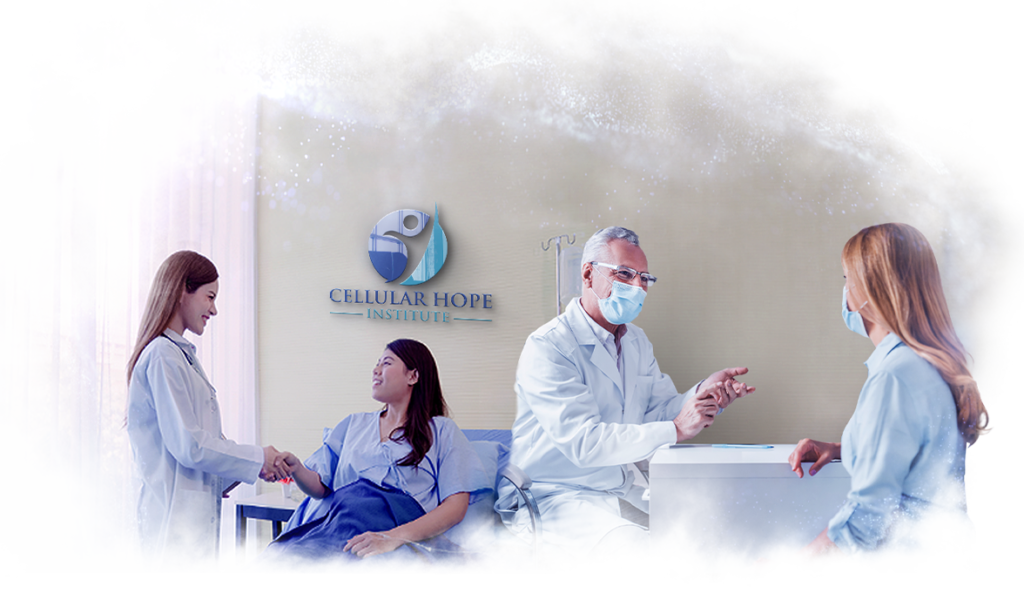
Our Team Will Assist You With:
- Scheduling your treatment dates
- Booking flights
- Hotel reservations (many hotels are a short walk from the hospital)
- Organizing transport during your stay in Cancun, including airport transfers
- Accompanying you to and from the hospital and answering any questions along the way
Our hospital is located in the center of Cancun, in an area known as ‘Stem Cell Circle,’ famous for its clinics and hospitals specializing in regenerative medicine research and treatment.
Our Commitment
We are dedicated to inspiring hope and improving our patients’ well-being by offering effective treatment with careful screening and a professional atmosphere where the patient’s health and happiness are paramount. Our mission is to provide the best possible experience through our committed staff, from patient outreach and coordination to your operating physician. We aim to alleviate your condition using the latest technology and quality care because our patients are our top priority.
Contact Us
Get to know the list of conditions that can be treated at our center by visiting the link below:
Additionally, you can contact us directly through the following email address:
info@cellularhopeinstitute.com
- Published in Blog
ISSCA Opening of Uccle, Belgium Center with GCell & Stem Cell Training
After several months of organizing and developing a location, the Global Stem Cells Group has finalized the construction of a laboratory and regenerative medicine research center in Uccle, Belgium.
This facility serves both as a regenerative medicine treatment and research center, but also as a plastic surgery clinic. In addition to this, one of the primary goals of the Center is to serve as a place for the fostering of knowledge and experience regarding the different products and equipment required for the application of cellular therapies. As part of the inaugural ceremony a group of physicians were trained in the setup and use of the various regenerative medicine protocols and application process of these cells into the patients.
This center is a push into Europe for the Global Stem Cells Group. As the science advances, newer and more advanced therapies and technologies are being developed and released into the market with each passing month.
With the European Union being one of the largest consumer markets in the world, the finalization of a brick-and-mortar location in Brussels, Belgium is one that will mean great things for the Global Stem Cells Group, and the presence and proliferation of regenerative medicine throughout Europe and the world.
“This was a wonderful opportunity that we could have. It goes to show that even during this pandemic, the medical community is one that is still going strong. We’re still rallying together to look for new breakthroughs, and come up with the most beneficial treatment options for patients,” Said Benito Novas, founder of the International Society for Stem Cell Applications, “In addition to this, it also provides an excellent platform for the distribution of regenerative medicine therapies and equipment, including the revolutionary new GCell Machine,”
Indeed, the inaugural training at the Stem Cell Center in Uccle, Belgium was one that covered both of the more traditional methods of stem cell isolation and application– adipose and bone-marrow derived autologous cells, but this training was also one of the first in which the company had the ability to demonstrate the novel GCell Machine. Using a precise system of blades and filters, it is able to process a stem cell sample from adipose tissue in less than half of the time that it would take a physician to do so through traditional means.
This allows the patient to be more comfortable throughout the shorter procedure, as less anesthesia is also required than when operating under traditional means. The GCell is a minimally invasive, portable machine that allows physicians to fully unlock the potential of regenerative medicine as a component in their practice. Using their global network of distributors and licensed vendors, Global Stem Cells Group is working fervently to ensure no interruption in the global availability of the most cutting-edge regenerative medicine products.
- Published in News


